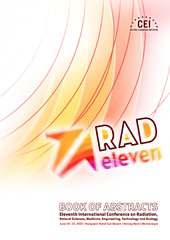Prikaz osnovnih podataka o dokumentu
Monitoring of biomass and biofuels contribution to atmospheric pollution by using nuclear techniques
| dc.creator | Radenković, Mirjana | |
| dc.creator | Topalović, Dušan | |
| dc.creator | Ćujić, Mirjana | |
| dc.creator | Onjia, Antonije | |
| dc.date.accessioned | 2023-12-28T10:50:17Z | |
| dc.date.available | 2023-12-28T10:50:17Z | |
| dc.date.issued | 2023 | |
| dc.identifier.isbn | 978-86-901150-6-8 | |
| dc.identifier.uri | http://TechnoRep.tmf.bg.ac.rs/handle/123456789/7057 | |
| dc.description.abstract | Renewable energy resources are of great interest for prevention and mitigation of the climate change effects. Here is presented a study on the utilization of green energy fuels derived from available resources as prevent for diminishing potential environmental pollution levels influencing this change. The atmospheric particulate matter composition, also recognized as hazardous and most responsible for human health and premature deaths would be adequate parameter to be followed in these terms. A biomass burning contribution to the aerosol fraction with particles less than 2.5 µmin diameter (PM2.5) was assessed in the Belgrade residential area. Daily PM2.5 aerosol samples collected on membrane Teflon filters over four seasons were analyzed by PIXE (proton induced X-ray emission) nuclear analytical technique and multi-wavelength (405-1050 nm) light attenuation measurements. Results have indicated presence of several biomass and biofuel related tracer elements like Ni, V, Cu, Zn, Ti, Mn, and Cr and significant contents of Pb and Cd, proving that it may be used for detection of their presence in the mix of energy related emissions. Black carbon concentration was also a good indicator candidate as its values have shown strong seasonality, although for more sophisticated recognition of specific species, additional analysis would be necessary. Receptor modeling using positive matrix factorization (EPA PMF 5.0) revealed about 40% of PM2.5 mass belonging to the biomass-related emission sources coming from the energy production sector. Besides the black carbon measured at wavelengths up to 600nm, K was recognized as a main tracer for biomass sources like wood and biofuels. A V/Ni ratio, characteristic for heavy oil burning, was noticed in all seasons indicating contribution of industrial emission sources during the summer in addition to its appearance in the heating season. Nevertheless, recently encouraged use of the individual biofuels such as biochar, bio-oil, methanol, and crude glycerol, could not be distinguished by applied methodology from the mixed ones. Use of HP Ge spectrometry for 210Pb/Pb ratio and K concentrations determination should be considered in specific cases only, due to differences in sampling periods and sample preparation procedures for radionuclides and PM2.5 elemental analysis. Obtained results support the use of nuclear analytical techniques for analysis as well as development of new tools and techniques for simple and efficient control of biofuel combustion products in emission exhausts, having in mind the intention of their more frequent application in everyday life in urban areas. | sr |
| dc.language.iso | en | sr |
| dc.publisher | Niš : RAD Centre | sr |
| dc.rights | openAccess | sr |
| dc.rights.uri | https://creativecommons.org/licenses/by/4.0/ | |
| dc.source | Book of abstracts / Eleventh International Conference on Radiation, Natural Sciences, Medicine, Engineering, Technology and Ecology (RAD 2023), 19–23.06.2023, Herceg Novi | sr |
| dc.title | Monitoring of biomass and biofuels contribution to atmospheric pollution by using nuclear techniques | sr |
| dc.type | conferenceObject | sr |
| dc.rights.license | BY | sr |
| dc.citation.spage | 68 | |
| dc.identifier.doi | 10.21175/rad.abstr.book.2023.15.10 | |
| dc.identifier.fulltext | http://TechnoRep.tmf.bg.ac.rs/bitstream/id/19332/bitstream_19332.pdf | |
| dc.type.version | publishedVersion | sr |

